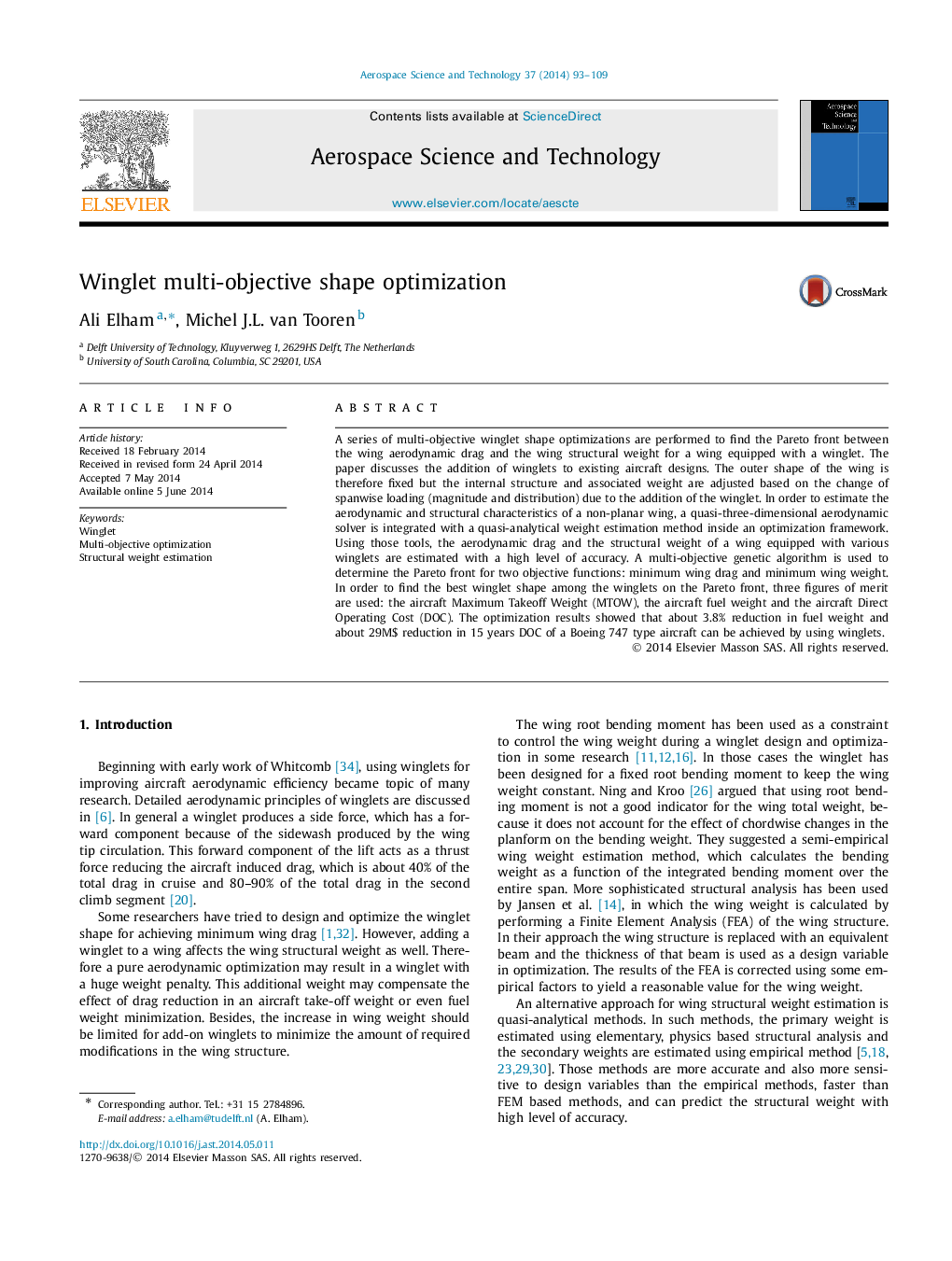| Article ID | Journal | Published Year | Pages | File Type |
|---|---|---|---|---|
| 1718036 | Aerospace Science and Technology | 2014 | 17 Pages |
A series of multi-objective winglet shape optimizations are performed to find the Pareto front between the wing aerodynamic drag and the wing structural weight for a wing equipped with a winglet. The paper discusses the addition of winglets to existing aircraft designs. The outer shape of the wing is therefore fixed but the internal structure and associated weight are adjusted based on the change of spanwise loading (magnitude and distribution) due to the addition of the winglet. In order to estimate the aerodynamic and structural characteristics of a non-planar wing, a quasi-three-dimensional aerodynamic solver is integrated with a quasi-analytical weight estimation method inside an optimization framework. Using those tools, the aerodynamic drag and the structural weight of a wing equipped with various winglets are estimated with a high level of accuracy. A multi-objective genetic algorithm is used to determine the Pareto front for two objective functions: minimum wing drag and minimum wing weight. In order to find the best winglet shape among the winglets on the Pareto front, three figures of merit are used: the aircraft Maximum Takeoff Weight (MTOW), the aircraft fuel weight and the aircraft Direct Operating Cost (DOC). The optimization results showed that about 3.8% reduction in fuel weight and about 29M$ reduction in 15 years DOC of a Boeing 747 type aircraft can be achieved by using winglets.
